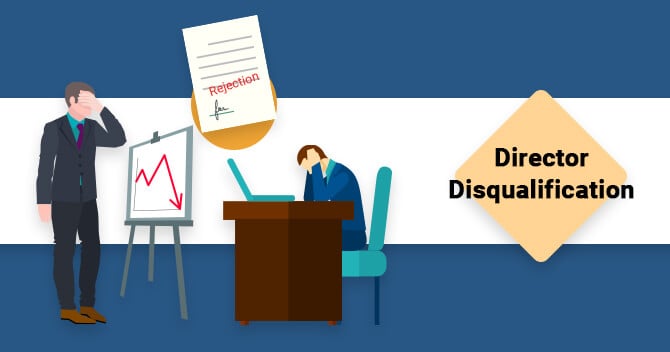The Company’s Directors are responsible for managing & looking after day-to-day affairs of the Company. The shareholders are the Company’s owners & they appoint the Directors to act as their representatives. The Companies Act, 2013 has bifurcated the rights & responsibilities of the shareholders & Directors. As per Provisions of the Section 169 of the Companies Act, 2013, a Company may, by passing an Ordinary Resolution (OR) in its extra-ordinary General Meeting (GM), remove a director before the expiry of the period of their office after giving them a reasonable opportunity of being heard. In this blog, we will discuss some FAQs ion Removal of a Director.
Removal of a Director- FAQS
Following are some important FAQs on Removal of a Director:
- Who Is The Director As Per The Companies Act?
According to the Companies Act (CA) of 2013, a director is someone who is appointed to the Board of Directors of a company. In general, it is the natural person with specific education and experience who contributes to the Company’s success. Section 2(34) of the CA, 2013 a director is defined as any individual who is elected by the Company’s board of directors to fulfil specific obligations and functions on its behalf under the terms of the Companies Act, 2013.
Only a single individual should be chosen to serve as a company’s Director. A company cannot choose an association, body corporate, or firm to be appointed as the Company’s Director. the provisions related to the removal of a director are mentioned under Section 169 of the Companies Act of .
According to Section 149 of the Companies Act, a Public Limited Company is required to appoint at least three directors, meanwhile, a Private Company must appoint a minimum of two directors and a One-Person Company must have one Director. A firm can appoint a maximum of fifteen directors. However, only after obtaining a special resolution at its annual general meeting (AGM) or extraordinary general meeting may a firm nominate more than fifteen directors.
- What Is The Maximum Term For A Director In A Company?
The term of the managing and full-time directors is 5 years, the term of the additional Director is up to the following general meeting, the term of the nominee director is up to the term specified in the agreement or other arrangement, etc.
- Is It Possible For A Firm To Remove A Director?
Yes, a company has all the right to remove any of its Director from the board, but there is a specific process for doing so. When the management of the Company decides Suo-moto to remove a Director from the Company, this is referred to as a removal of the Director.
- Which Laws/Provisions Regulate The Removal Of A Director In India?
The removal of a director is addressed in Section 169 of the Companies Act of 2013. Otherwise, the corporation and its officers will face penalties under The Companies Act, 2013.
- What Is the Difference Between the Resignation and Removal of a Director?
No, resignation & removal of a Director is not the same things. Resignation occurs when a director willingly decides to step down from the position of Director. When a firm pushes a director to resign, this is referred to as removal.
- How Does The Company Make The Decision To Remove A Director?
The board calls a board meeting after giving notice to each Director and shareholder. Voting is conducted to approve the resolution about the removal of the Director. The removal is authorised or denied based on the majority of votes cast.
- Is There Any Exception To The Removal Of A Director From The Company?
Yes, there is exception for the removal of a director, this means a company cannot remove following persons from the post of directorship in a company:
- If the Director appointed by the Tribunal (NCLT)
- If the Company has availed itself the option to appoint not less than 2/3 of the total number of directors in the Company as per the principle of proportional representation in accordance with the provision of the Companies Act, 2013.
- What Conditions Must Be Met Before Removing A Director?
The Director in question should first be given a fair opportunity to defend his position before anything else.
- What Are Forms Needed To Remove A Director?
There are just two (2) forms needed for removing the Director:
- E-form MGT-14
- E-form DIR-12
- What Are the Post-Compliances Following the Removal of A Director from the Company?
The Company must file the above-mentioned forms, along with any necessary documents, with the Registrar within thirty (30) days following the passing of the ordinary resolution in the general meeting.
- How Would Things Turn Out If The Company Ignores The Rules And Fails To Comply With Provisions Of The Companies Act Of 2013?
If a firm violates these provisions, the Company & any officer of the Company who is in default shall be fined not less than Rs. 50,000/- which may extend to five lakh rupees.
- What is DIN?
DIN is a unique identification number issued to a prospective director by the DIN cell of the Ministry of Corporate Affairs (MCA). An individual should hold a DIN before being appointed as a director in any Company.
- What Are The Ramifications Of Failing To Comply With Form DIR-12?
The requirements for eform DIR-12 must be followed by all companies that are incorporated in accordance with Indian law, whether new or existing. This form requires the Company to provide information about the appointment or removal of a director in accordance with Section 7(1)(c), Section 168, and Section 170 (2) of the Companies Act of 2013[1], as well as Rule 17 of the Companies (Incorporation) Rules and Rules 8, 15, and 18 of the Companies (Appointment and Qualification of Directors) Rules of 2014.
A company must submit an eform DIR-12 within thirty days of the date of such removal; however, if the Company does not do so, it may be subject to the following penalties:
- If it is submitted within a window of 31 to 60 days, then twice the government fees;
- If it is submitted within a window of 61 to 90 days, then 4 times the government fees;
- If it is submitted after the window of 90 days, then 10 times the government fees;
- If it is submitted after the window 180 days, then 12 times the government fees, also the members will be booked for the compounding offense.
- What Steps Must Be Taken To Remove A Director In Accordance With Section 167(1)(B) Of The Companies Act Of 2013?
The process includes the following steps:
- The 1st step in the process is to notify the concerned Director that he is being removed. The Director must be given a chance to be heard;
- The 2nd step in the process is to file the form DIR-1;
- At the end of the process, complete all associated obligations and concerned parties.
- What Is The Procedure For Removing A Director From A Company As Described In Section 169 Of The Indian Companies Act Of 2013?
The process includes the following steps:
- Shareholders can only remove directors by passing an ordinary resolution in the general meeting;
- The shareholders must issue a special notice of their intention to remove a director from the Company;
- After receiving the notice, the Company should send it to all members at least seven days before the meeting date;
- The corporation should notify the concerned Director that he is being removed. An opportunity to be heard must be given to the Director;
- All special resolutions passed at a company must be filled out under form MGT-14 with ROC within thirty days of being passed (Registrar of Companies);
- The drafted notice and draft resolution will be discussed at the board meeting;
- Prepare the necessary documentation, and lastly, the corporation can remove the concerned Director;
- A Director of a Company who has been removed from the board of directors of a company is not eligible to be appointed to the board of that same Company again.
- Can The Director Be Reappointed By The Company?
It should be noted that a director who has been removed from office will not be re-appointed as a director in the Company. Also, to remove a director, two-thirds of the members must agree/a special resolution must be passed to do so.
- Is It Obligatory For The Outgoing Director To Surrender Or Sell Their Shares?
No, even though he is no longer a director of the Company, the exiting Director must keep his shares. However, this may be subject to the guidelines outlined in the Company’s Articles of Association (AOA).
Read Our Article: Companies Act 2013 Provides Procedure For The Removal Of The Director











